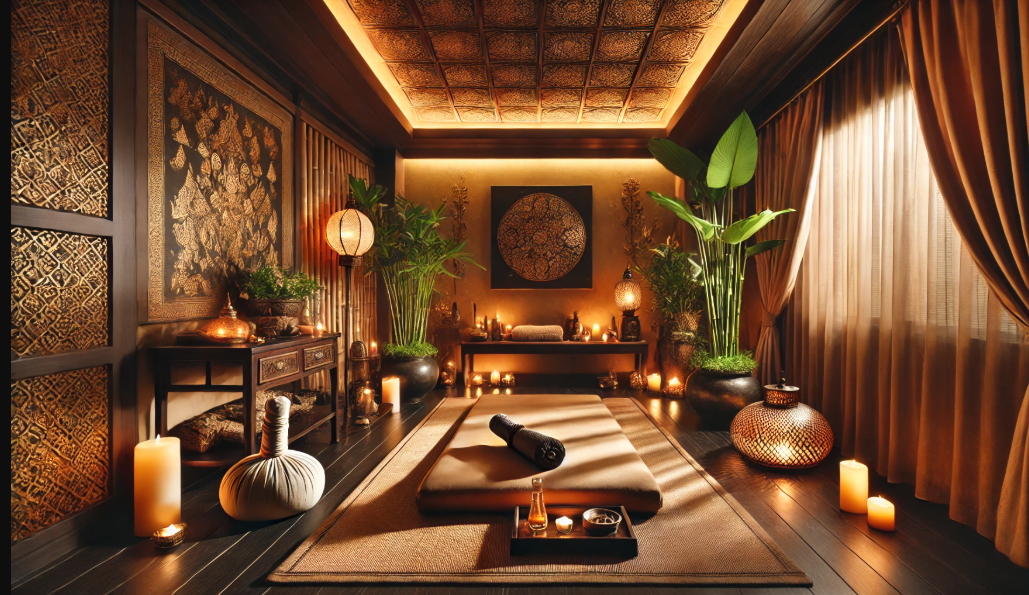
TEXT US

TEXT US
perththaimassage
November 22, 2024
Do not hesitate to contact us. Your enquiries is most welcome.

Thai Massage is a centuries-old practice that harmonises the mind, body, and spirit. Unlike conventional massages, which focus solely on muscle relaxation through kneading and pressure, Thai Massage incorporates a combination of acupressure, assisted stretching, and rhythmic compression. For many, it’s not just a physical experience but a holistic journey. This article delves into the essence of Thai Massage, its distinctiveness, and why it might just be the perfect therapy for you.
Thai Massage, or “Nuad Boran,” originated over 2,500 years ago and is deeply rooted in Thailand’s cultural and spiritual traditions. It is believed to have been developed by Shivago Komarpaj, a physician to the Buddha, who combined principles of Ayurveda from India with Chinese acupuncture and traditional Thai practices.
This unique synthesis forms the foundation of Thai Massage, which is centred on energy flow along “Sen” lines—similar to meridians in Chinese medicine. Practitioners aim to restore balance to these energy pathways, promoting overall health and vitality.
Unlike a typical oil-based massage where the client lies passively on a table, Thai Massage is an interactive experience. Clients remain fully clothed and recline on a padded mat while the therapist uses their hands, thumbs, elbows, knees, and even feet to perform rhythmic compressions, joint mobilisations, and deep stretches.
The assisted stretches, often likened to yoga poses, are one of Thai Massage’s hallmark features. These movements improve flexibility, release tension, and enhance blood flow.
Thai Massage is not just about the physical body—it’s also about energy. According to Thai tradition, the body contains invisible energy channels called “Sen” lines. Blockages in these lines are believed to cause discomfort or illness. Thai Massage works to unblock these pathways, restoring balance and encouraging natural healing.
This spiritual dimension sets Thai Massage apart from Western-style massages, giving it a unique therapeutic depth.
At Perth Thai Massage, we pride ourselves on delivering authentic Thai Massage experiences rooted in tradition and adapted to modern needs. Here’s what sets us apart:
Thai Massage is a unique therapy that combines physical relief with energy healing, making it a holistic experience unlike any other. Whether you’re looking to relieve tension, improve flexibility, or simply relax, Thai Massage offers profound benefits that go beyond the surface. At Perth Thai Massage, we’re dedicated to introducing you to this transformative practice and ensuring your first session—and every session after—is a step towards greater wellness.
Are you ready to discover the difference Thai Massage can make? Book your appointment today and embark on a journey to relaxation, restoration, and rejuvenation.
Stay for article 2 in the series “10 Health Benefits of Thai Massage You Didn’t Know About“
Thai massage involves a combination of assisted stretching, rhythmic compression, and acupressure techniques, while regular massage typically focuses on kneading, stroking, and rubbing of the muscles using various techniques such as effleurage and petrissage. Additionally, Thai massage is rooted in ancient Thai healing traditions and emphasizes balancing the body’s energy flow, whereas regular massage has its origins in Western medical practices and aims to promote relaxation and reduce muscle tension.
Both Thai massage and regular massage can be effective for relieving muscular tension and stiffness, but they approach this goal in different ways. Thai massage uses stretching and acupressure techniques to release tension and improve flexibility, while regular massage employs kneading and stroking motions to relax the muscles and improve circulation. The choice between the two depends on individual preferences and needs.
Thai massage is often favored by athletes and physically active individuals for its emphasis on flexibility and mobility. The assisted stretching techniques used in Thai massage can help to improve range of motion, reduce the risk of injury, and enhance athletic performance. However, regular massage can also be beneficial for athletes, as it helps to alleviate muscle soreness, promote recovery, and prevent overuse injuries.
Both Thai massage and regular massage can promote stress relief and relaxation, but they offer different approaches to achieving these goals. Thai massage combines physical manipulation with mindfulness practices to induce deep relaxation and reduce stress levels. Regular massage, on the other hand, focuses on soothing the muscles and calming the nervous system through gentle, rhythmic strokes. Ultimately, the choice between the two depends on individual preferences and the desired outcome.
While both Thai massage and regular massage are generally safe for most people, there are certain contraindications and health considerations to keep in mind. Thai massage involves stretching and pressure techniques that may not be suitable for individuals with certain medical conditions, such as osteoporosis, herniated discs, or recent injuries. Regular massage, on the other hand, may not be recommended for individuals with skin conditions, open wounds, or certain medical conditions that affect circulation. It’s important to consult with a qualified healthcare professional before undergoing any type of massage therapy, especially if you have underlying health concerns.